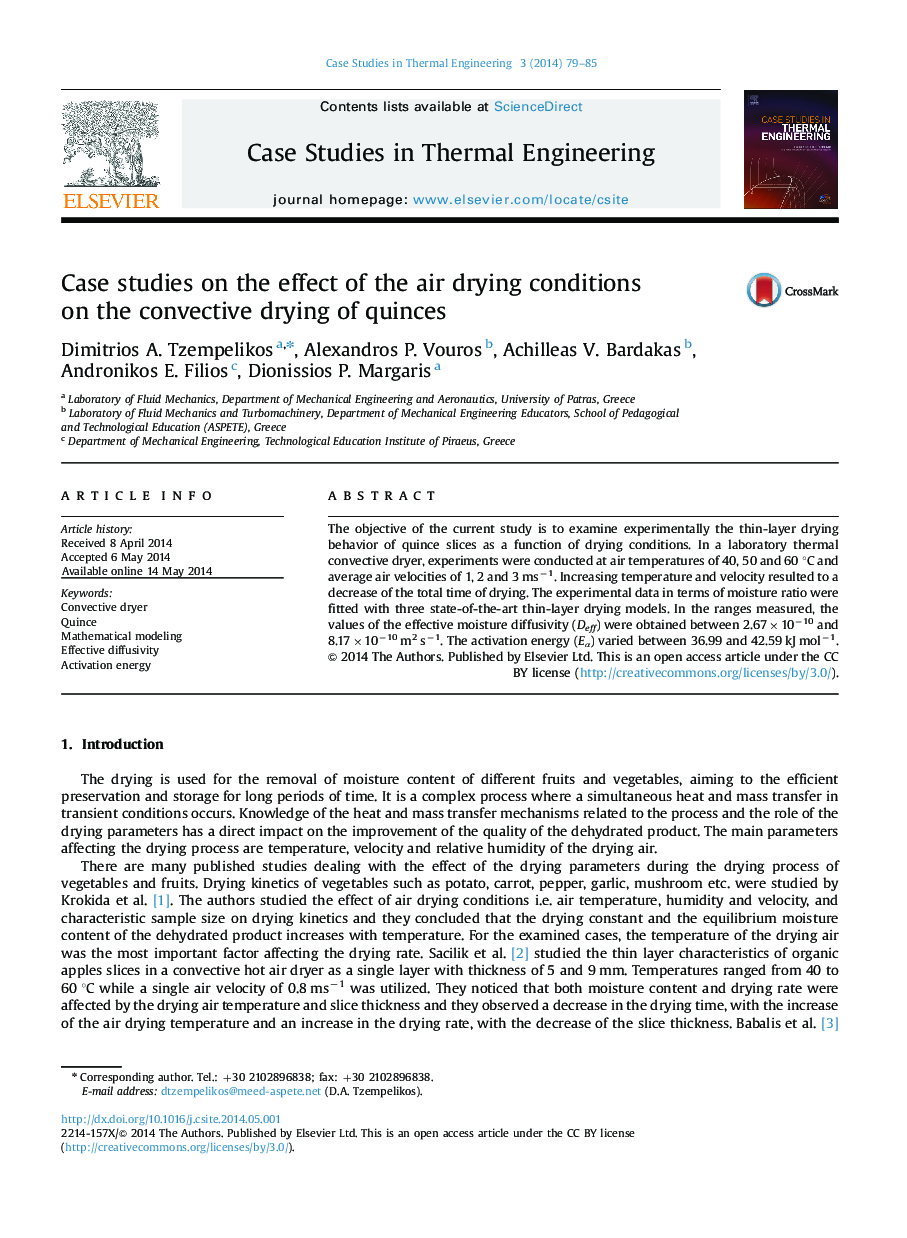| Article ID | Journal | Published Year | Pages | File Type |
|---|---|---|---|---|
| 765703 | Case Studies in Thermal Engineering | 2014 | 7 Pages |
•An increase from 40 °C to 60 °C, at 2 ms−1 resulted to a decrease of the total time of drying of 54%.•An increase from 1 ms−1 to 2 ms−1, at 60 °C resulted to a decrease of the total time of drying of about 30%.•For the range of the conditions examined, Deff varied between 2.67×10−10 and 8.17×10−10 m2 s−1.•The estimated values of Ea lie within 36.99 and 42.59 kJ mol−1.
The objective of the current study is to examine experimentally the thin-layer drying behavior of quince slices as a function of drying conditions. In a laboratory thermal convective dryer, experiments were conducted at air temperatures of 40, 50 and 60 °C and average air velocities of 1, 2 and 3 ms−1. Increasing temperature and velocity resulted to a decrease of the total time of drying. The experimental data in terms of moisture ratio were fitted with three state-of-the-art thin-layer drying models. In the ranges measured, the values of the effective moisture diffusivity (Deff) were obtained between 2.67×10−10 and 8.17×10−10 m2 s−1. The activation energy (Eα) varied between 36.99 and 42.59 kJ mol−1.
